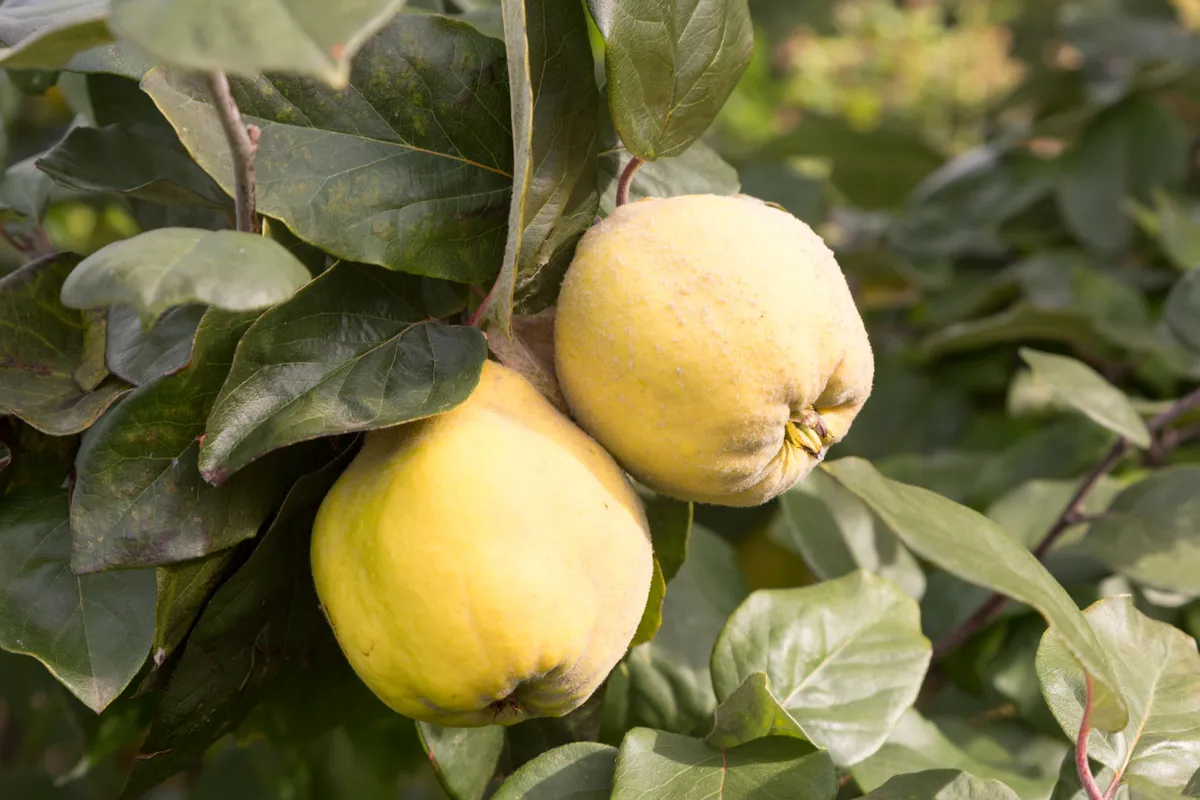You could be forgiven for mistaking a quince for a pear, especially one of the golden-skinned, chubby sort, like a Starking or a Comice. They are of a roughly similar size and both dangle from gnarled, shade-giving trees. The traditional habit of scattering quince trees among those bearing other fruits would only add to the potential confusion. Bite into one, however, and the difference is quickly apparent. While a ripe pear bursts with sweetness and tumbles juice down your chin, all but the very ripest of quinces is hard enough to make your jaws ache and has a flavour to make you wince. In Turkish, its extreme sourness is referenced in the saying ‘ayvayı yemek’ – meaning ‘eat a quince’ – a rather forthright way of explaining the outcome of any unfortunate situation that would best be avoided.
Not good raw
While some claim to enjoy gnawing on raw quince, this fruit, unlike the pear, is best enjoyed cooked or preserved. Its unique flavour and hint of pink make an interesting addition to any apple pie. While pears make bland jam, quince preserve is flavoursome. High in pectin, it is the main ingredient of the original marmalade. Oranges didn’t make an appearance until the late 18th century. In the Middle Ages, quinces were boiled to form a thick purée that was poured into animal-shaped moulds. This survives today in Spain as ‘membrillo’. In Iran, quinces are added to meat dishes for a sour fruity note, reminiscent of medieval European cuisine before the definitive divide into sweet and savoury.

